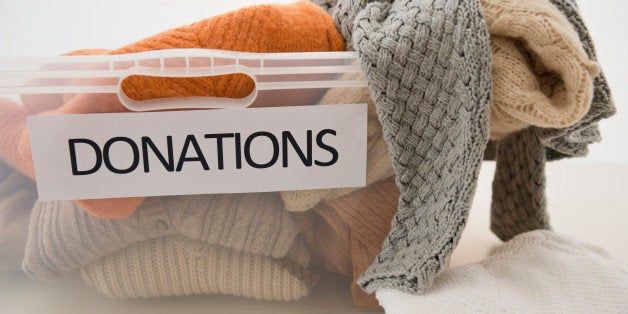
What You Do
You're heading to the beach tomorrow, for ten days! The dog's in the kennel, the mail is stopped. Pizza tonight sounds good. Wait, food...forgot to clean out the fridge. You open the door, look in, frown. Seems terrible to throw away perfectly good food.
Hang on, what about that food bank? Or better yet, Bethesda Cares' day shelter is right downtown. Perfect!
You grab a bag and start filling it with produce and dairy products. You pause when you get to the container of hummus. It has a few spoonfuls taken out, but no one double-dipped. Maybe someone would like it? Hummus is chock full of nutrient-dense calories, so you include it.
Say, it feels good to give healthful food to people with less than you! You go to the pantry, scan the canned goods, toss a few in. You load up the car, bring it to us and accept your tax deduction slip.
What We Do
We bring your donated bags into a back room and because you (hopefully) told the receptionist they contain perishables, a staffer sorts through them. Most items are useful and are distributed to clients. But the ripe tomatoes won't last, so we need to find a use for them. The opened hummus gets tossed, for health reasons. The yogurts go into our fridge for another day--wait, the blueberry is expired. Toss.
You get the picture. We used some stuff as you hoped, but not everything. And searching for and disposing of unwanted items cost staff members time, which is exactly what you did not intend.
Could the waste of donor and staff energy have been avoided? Of course.
The Problem
I am happy to report that, in my experience, the vast majority of donors (like my fictional vacationer) give with an eye toward a) supporting the organization's mission; b) putting functional but unwanted items to second use, and c) that tax deduction receipt. There are the "donors" who treat nonprofits as deduction-giving garbage dumps, but they are blessedly few and far between.
I think that giving would be more effective if we nonprofits were clearer about not just what we need, but also what we don't need. Well-meaning donors tend to err on the side of excess: "Well, maybe they can use it." The nonprofit, not wanting to offend, tends to simply accept what people bring to them. If we nonprofits urged a bit more triage on the donor end, I suspect that, rather than being offended, donors would be happy to eliminate that "maybe." Staff would have less work sorting items, and clients would get only items they will use.
So here are my everyone-wins donation dos and don'ts:
Food:
Do know that, when you donate food to soup kitchens, you are protected by a federal "Good Samaritan" law. Have untouched leftovers from a party? We'll take 'em!
Do check websites to see whether your chosen nonprofit posted a wish list of needed items. If you're going beyond that list, use common sense. That margarita mix? No thanks.
Don't give food that's partially consumed. Just don't. (I'm talking to you, bitten-burrito-guy. "I just took one bite," he said, offering it to our receptionist. "Didn't like it. You can just cut that part off.")
Don't give food that's expired. Take a look before you put it in the bag. We check for that but it's safest if tainted food never gets in the door.
Clothing:
Don't give anything that is torn, dirty or has a broken zipper. We don't have the capacity to clean or repair.
Do give items appropriate for the season. Most nonprofits, especially in metropolitan areas, lack storage space to keep items for a season months away.
Do keep your bellbottoms. Generally speaking, our clients are as aware as you of what is in style and what shouts "1970s!" Remember, they are no "different" than you or I. They're enduring hard times and feeling forced to accept a Nehru jacket for warmth is not going to move them closer to regaining a positive sense of self.
Do think about whether your item is a good fit for the organization's mission. At Bethesda Cares, I have seen donations of cummerbunds, a floor-length crinoline and used car floor mats. These items may be of interest to other client-bases but, because we work with clients suffering chronic homelessness, they don't need formal wear or clean car floors.
If you're unsure whether an item would be useful (might someone homeless want a suit jacket?), just ask. I'd bet the nonprofit would be happy to answer your query.
On a personal note: when I open a bag of donations and find a jar of nuts, empty but for eleven cashews on the bottom of the jar, or a t-shirt with an enormous stain on it, I get disheartened. I feel that a donor who won't wear that soiled t-shirt, but expects someone else to, does not see the humanity of the very people he is trying to support. That the donor fails to see that, by offering something dirty or unappetizing to a client, that "gift" actually makes him feel third-class.
I'll go further. I don't think those in need should "just be grateful for whatever they get." I just don't. Gratitude is important, but it doesn't mean that someone homeless should be glad to accept scraps and crumbs. Our clients have opinions, preferences and personal tastes, just like you and I, because, well, they're people, just like you and I. No one stops liking mayo on a turkey sandwich because he lives without a roof.
